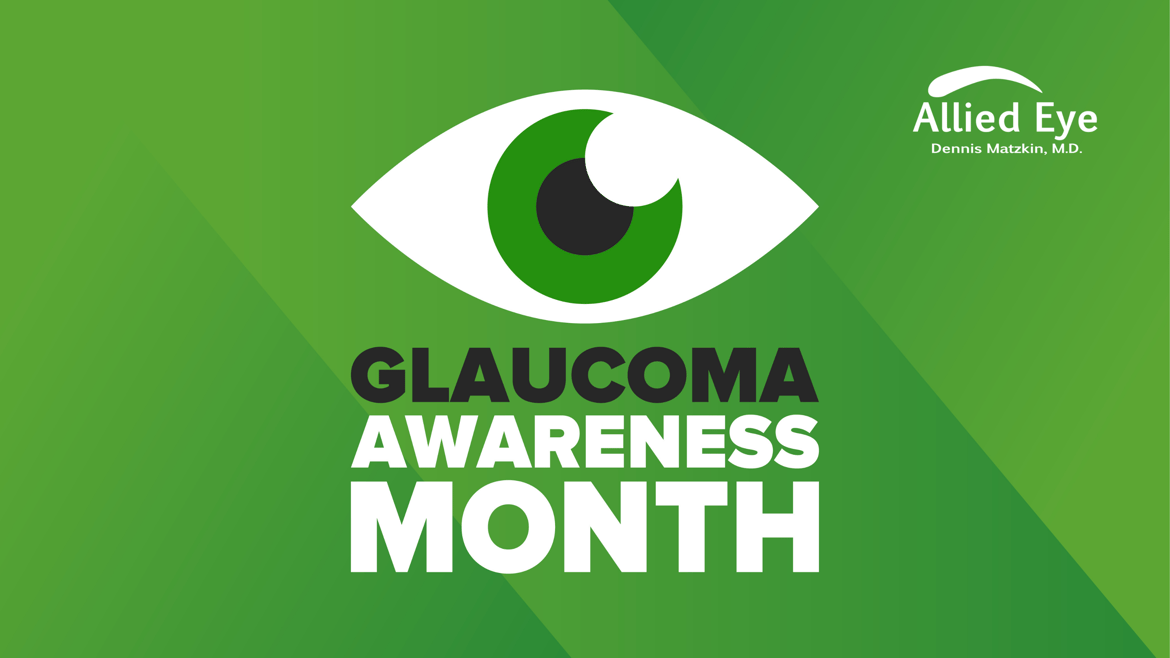There usually aren’t any signs or symptoms in the early stages of glaucoma. That’s one reason it’s so important to have routine comprehensive eye exams as recommended by Dr. Matzkin. Keep reading to learn more about glaucoma, including the different types, symptoms, risk factors and treatment options.
What is Glaucoma?
Glaucoma is an eye disease that damages your optic nerve. The optic nerve is located at the back of your eye. It contains over one million nerve fibers and connects to your brain. It carries light signals to the brain, where they are interpreted as images.
When pressure builds up in the fluid inside the eye (intraocular pressure), it compresses the optic nerve. This causes atrophy, or cell death, that interrupts the nerve’s ability to function. Over time, unresolved eye pressure can damage the optic nerve enough to cause blind spots.
Are there different types of glaucoma?
Yes, there are several types of glaucoma. The most common type is called primary open-angle glaucoma. It happens gradually when the eye fails to drain fluid as efficiently as it should. Normal-tension glaucoma is a type of open-angle glaucoma that happens in people who have normal intraocular pressure, but for some reason, their optic nerves are overly sensitive to normal pressure levels.
Angle-closure glaucoma is a medical emergency. Also called narrow-angle or acute glaucoma, this type is caused when the outer edge of the iris (the colored part of your eye) blocks the eye’s fluid drainage angle. This causes a sudden buildup of eye pressure that can result in blindness in just a few days.
Less common forms of glaucoma include congenital glaucoma, which some babies are born with, and secondary glaucoma. Secondary glaucoma is caused by another medical condition, such as diabetes or uveitis (eye inflammation). It can also result if iris pigment or another material detaches from the eye and blocks fluid drainage.
Glaucoma Signs and Symptoms
As mentioned above, most people in the early stages of glaucoma are entirely symptom-free. If the disease progresses unchecked, you may eventually notice blind spots in your peripheral vision. Want to see what glaucoma blind spots might look like? The American Academy of Ophthalmology has created a Glaucoma Vision Simulator to help you understand the vision changes that occur with untreated glaucoma.
Acute angle-closure glaucoma is different. This medical emergency causes sudden symptoms, including:
- Intense eye pain
- Sudden blurry vision
- Eye redness
- Headache
- Nausea and vomiting
- Seeing halos or rainbow-colored rings around lights
What are the risk factors for glaucoma?
Not everyone is at equal risk of developing glaucoma. Certain factors are associated with an increased risk of this disease. Regular screening is vital if you:
- Are over age 40
- Are of African, Hispanic, or Asian heritage
- Have family members with glaucoma
- Have high eye pressure
- Have had an eye injury
- Are severely nearsighted
- Have diabetes, high blood pressure, migraines or poor blood circulation
- Have thinning of your optic nerve
- Have corneas with centers thinner than normal
- Use long-term steroid medications
The more of these risk factors you have, the greater your chance of developing glaucoma.
How is glaucoma diagnosed?
A comprehensive dilated eye exam is required to diagnose glaucoma. Contrary to popular belief, an eye pressure test alone is not enough to detect the disease. In addition to measuring your eye pressure, Dr. Matzkin will examine your optic nerve, cornea thickness and eye drainage angle. Your peripheral (side) vision will also be tested.
What treatment options exist for glaucoma?
Once vision is lost to glaucoma, it cannot be recovered. However, early detection and treatment can stop disease progress. Glaucoma treatment options will vary according to the type of glaucoma you have and how far it has progressed. Your doctor may suggest:
- Prescription eye drops that lower eye pressure and prevent optic nerve damage.
- In-office laser treatment to restore normal fluid drainage.
- Surgery to create a new drainage channel or correct a narrow drainage angle.
At Allied Eye, we help you see the world more clearly through quality eye care. Our one-stop shop offers comprehensive eye exams, cataract surgery with multifocal implants, diabetic eye exams, LASIK, treatment for dry/watery eyes, and so much more! We even have our Allied Optical Shop inside our facility for your convenience. Call or text us to learn how Allied Eye can help with your eye care needs, or to schedule an appointment (423) 855-8522.


